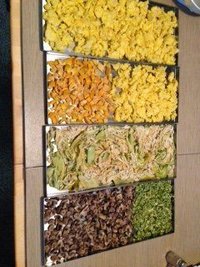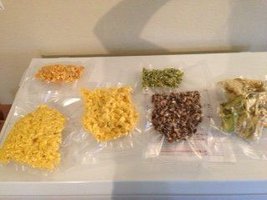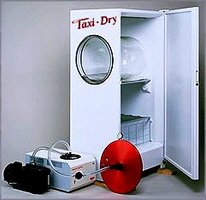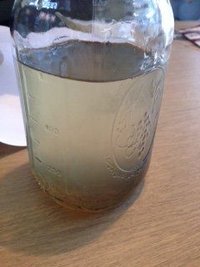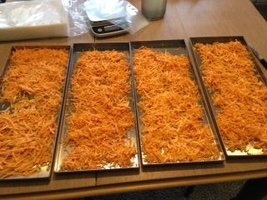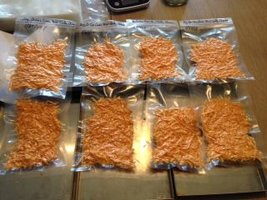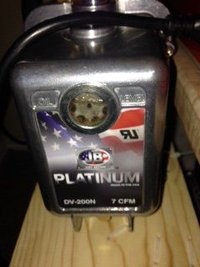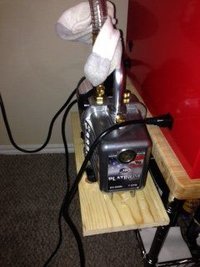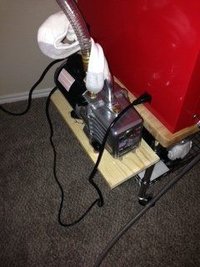This is from another forum I post to. The Survival Podcast forum.:
This was the original "question." :
I get your point and am trying to justify an FD for my own family, but to do a fair comparison, something you are not taking in to account is the electricity to run your FD and the time invested to grow and harvest your own food and to FD it yourself. Also, you mentioned the bags, but what about the investment for the equipment to remove oxygen and seal them? Wouldn't #10 cans be a better solution to LTS and what would be the investment be to support that, to properly store long term?
To your point though, "quality" and "choice" trumps all and is likely the reason people invest in a HRFD, not cost or time savings.
This is my answer:
Thank you for the questions. This is long but that's because I have thought about this a LOT before buying this unit.
I have not yet seen an electric bill with any significant FD use on it. And the cost will vary based on your electric rates around the country. I have seen others who run their FD "constantly" and yet they pay about $1/day to run it. I would say the same needs to be considered for any food storage method. I can on an electric stove and my dehrydrator, of course, runs on electricity. Obviously when I get my bill I will let y'all know how much I see in cost. After this week, if it's significant, I should see it in my bill!
This is what HR says about the cost of electricity.
Quote
What type of power do the freeze dryers use? How much will it cost to run?
Harvest Right has taken every precaution to make this appliance run as affordably as possible.
Small and Standard
Our small and standard freeze dryers use a standard 110 volt outlet.
At peak, the freeze dryer draws about 16 amps, but on the average about 9 to 11 amps (990-1210 watts) of power per hour. A dedicated 20 amp circuit is recommended. Your freeze dryer will cost an estimated $1.25-$2.80 a day, depending on power costs in your area.
I have a standard size, 4 tray unit. They now also make a larger unit with 5 trays that are somewhat larger.
I wish I could grow and harvest my own food! I pay good money for good food. I want it available for travel (dietary restrictions) and for TEOTWAWKI situations (like job loss or a total collapse of the economy). Also, we are planning to hike the Appalachian trail in a few years and this will be a significant savings for that trip. Currently I am trying to get enough meals (and variety) for my upcoming backpacking trip this weekend.
As for method of sealing. I use plastic or mylar bags sealed in my chamber sealer. My previous vacuum sealer had been crapping out on me after only 2 years of use and I was eyeing a Cabela's "hunter's grade" sealer for around $469. Someone else on this forum was talking about chamber sealers. Chamber sealers allow you to seal plastic bags without channels which are MUCH cheaper than regular vacuum bags. I literally have some sized bags that are as cheap as 2.5 cents per bag. My largest bag costs 6.3 cents per bag. When I was using vacuum bag rolls I was able to get my most common size down to 34 cents per bag for the size that I mostly use (8"x12") however, I actually had less storage space due to the amount of bag the old sealer takes to make a seal. I figure I lost at least an inch for the seals. Which is not quite as insignificant as it may seem when using a lot of bags. I did get a chamber vacuum sealer for $679 shipped. And it does seal mylar bags, up to 7 mil thick, very well, though it's not "rated" for mylar so I wouldn't want to do large amounts of mylar. For longer term storage I will use larger mylar bags. Maybe. They are very costly. There are only 2 of us so we may want to continue with the small plastic pouches. We can always put individual meals that are in plastic into a larger 5 gal mylar bag in a bucket. That would give us the benefits of being able to open only what we need and the up to 25 year shelf life mylar provides.
A chamber sealer is really the only type of vacuum sealer I would use for FDed foods because the foods can literally become powdery very quickly and that is not good for the suction type sealers. Also, we do use this sealer to seal foods going into the freezer. And it works with freezing liquids which is impossible with a regular sealer without a manual control and still messy even with a manual control as you end up having some liquid sucked up by the vacuum machine.
Alternatively we can seal in mason jars. I know there are many people who use this for "short term" foods. Like FDed marshmallows and ice cream bars. Snack type things or maybe "staples" like rice. Actually, I may do this for a spanish cauliflower rice I just started making or my tomato powder next season (tomato sauce dehydrated this season and then powdered, I may use the FD for it next year). My chamber sealer will actually seal small pint sized (and smaller) jars. This is good as I didn't have to use my handheld attachment at 2am this morning to seal up the rest of my salsa. This function will also come in handy if I am using the dehydrator or FD to powder gravies, soups/broths, sauces, etc.
As for #10 cans. For us that's not a great alternative at this point. We could borrow a can sealer from the local LDS store (they loan them out free) and buy cans from them, relatively cheap. But then we would be restricted as to when we could run our FD as to when we would have the canner available. Buying a can sealer is out of the question for us at this point. I think the cheapest I have seen for a #10 can sealer is $2K though a quick perusal shows some smaller units for smaller cans to be under $1K. It may be a possibility in the future for us. But we REALLY like the ability for individual meals.
Now, most people DO NOT USE a vacuum sealer for their FDed foods. HR suggests their 7 mil mylar and an O2 absorber and an impulse sealer. That makes the cost of sealing, up front, much cheaper but given our particular needs for our particular situation (and the fact we were buying the sealer anyway) we went a different way.
Back to the actual food we are FDing. Some may call us "food snobs" or "whack jobs." You pick. But briefly, we eat almost entirely organic produce. Sometimes we can't get it and I will change the menu but certain things my husband "has to eat" every week (like his sweet potatoes). When we can, we eat grass fed beef or pastured, organically raised chicken/pork or as close as we can afford to. We do not eat foods with nitrites. We do not eat ANY grains or derivatives. That means no corn, no vegetable oils, very little soy, no wheat or rice products, no added sugars - including any cane sugar, etc or any of the fructose/sucrose cheap garbage put into foods. We make our own ketchup for the few times we need it, and BBQ sauce and Worcestershire sauce. I would make our own mustard too if it wasn't so easy to buy it without any nasties in it. This is how we eat EVERY DAY. We have been doing this for 5 months now and look at it all as an investment in our health as we have already experienced several health benefits. So how much do you value your health?
While we can buy some organic produce already FDed, and even some meals, the cost is very high. So our cost is actually much lower and the longer we own this and are able to take advantage of seasonal price drops on this food, the bigger our long term savings will be.
I may have made a post about our cost of these meals. If I haven't, I will. I am posting similar threads on a few forums so sometimes a post doesn't make it to all the forums.
Back to the cost of storage. At 6 cents a bag, how many times would you need to use a mason jar to get your cost down to 6 cents per quart? Well, basically you can't as the lids are at least that much and usually between 10 and 20 cents each depending on when you get them and if you have a coupon. But then the cost of the jars comes into play as well. Even a smoking deal on quart jars, say $8 for 12 means 75 cents each. You would have to use that jar more than 12 times to get it down to 6 cents per use. Which for many people will mean 12 years or more before the jar per use cost is the same as my bag cost. The other cost with jars is the cost to store them. I had quite an investment in shelves over the years for my home canned goods. You need very sturdy shelving to hold all that weight. I know, I have hundreds of jars of various sizes, of food. And while I likely won't give up on canning all together, that is a very time intensive, energy intensive, process.
Variety: FDing offers the most variety for foods you can store long term. Hands down. Ever can avocado? You can't. Not safely and I wonder how that would work out on the other side! Ewwww. About the only thing I have found I can't FD are straight fats like oils though some fat/oil in the preparation of the food if you are cooking and then FDing should not be any problem. You can FD raw or cooked food. You still need a dehydrator to make jerky and not so sure you could/should FD jerky. But then again, that's probably not necessary anyway. A lot of the meals I make, there is no safe tested recipe for canning them. Dehydrating doesn't work very well when trying to dry things with mixed ingredients. Dehydrated food also gets VERY sharp and hard. This is why dehydrated ground beef is referred to as "gravel." Ability to rehydrate FD food is much better than dehydrated food. FD food retains it's texture, size and shape better. FD food also retains 97% of it's nutritional value.
So I hope this helps and doesn't sound too much like "I'm right and you're wrong." It's not meant that way. But you asked some good questions and my answers were not simple. And they are our "justification" for buying this machine.
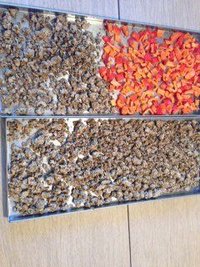
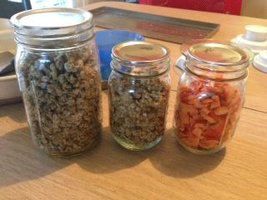
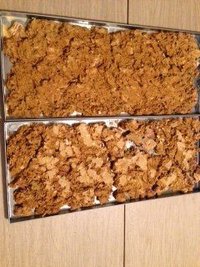
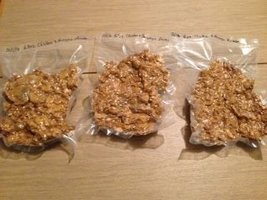





![Grin [grin] [grin]](/xen/styles/default/xenforo/smilies.vb/041.gif)
